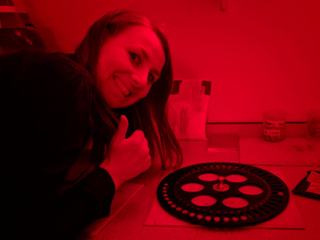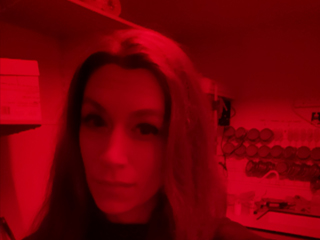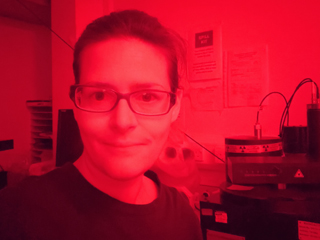Liverpool Luminescence Laboratory
The Liverpool Luminescence Laboratory is a world-class research facility with the capabilities to perform cutting-edge luminescence dating techniques for determining the timing of sediment deposition or exposure.
Luminescence dating is a versatile technique and can be advantageous over other geochronological techniques as:
- It directly determines the timing of sediment burial or exposure;
- It can be used in many depositional settings (e.g. aeolian, fluvial, glacial, or lacustrine);
- It can used for grain sizes ranging from silt up to boulders;
- It has the potential to cover the last 500,000 years (and in some cases beyond).
The Liverpool Luminescence Laboratory is a purpose-built facility for the preparation and analysis of luminescence samples, both sediments and rock slices (cobbles and/or rock samples from boulders).
Dr Rachel Smedley - Reader and Laboratory Director
 “I am a geochronologist specialising in luminescence dating. I like to develop new and innovative luminescence dating techniques, in addition to applying the
“I am a geochronologist specialising in luminescence dating. I like to develop new and innovative luminescence dating techniques, in addition to applying the
technique to answer interesting research questions. I have worked in most, if not all, depositional settings (glacial, fluvial, landslides, wind-blown, caves, coastal, permafrost, hillslopes) with many international collaborators to address key research questions related to the environmental sciences, archaeology, physics and engineering. I have particular expertise in the use of single grains for luminescence dating in the most challenging settings in the world and my latest innovations are working to develop the rock luminescence technique and its use as an erosion-meter.”
Rachel.Smedley@liverpool.ac.uk
Dr Kaja Fenn (she/her) - Lecturer in Environmental Change
 “I am an expert in dating Quaternary windblown (aeolian) sediments, in particular loess deposits. However, I have experience working in a range of geomorphic settings including fluvial, dunes, scree and slope deposits, as well as supporting archaeological projects by developing chronologies for human occupied caves and open-air sites. In my research I use both quartz and feldspar, multigrain and single-grain methods, and apply Bayesian modelling to develop age-depth models. I have experience dating very young sediments (a few hundreds of years) and very old sediments (beyond the last-glacial-interglacial cycle). My other interests include sediment provenance (learn more here).”
“I am an expert in dating Quaternary windblown (aeolian) sediments, in particular loess deposits. However, I have experience working in a range of geomorphic settings including fluvial, dunes, scree and slope deposits, as well as supporting archaeological projects by developing chronologies for human occupied caves and open-air sites. In my research I use both quartz and feldspar, multigrain and single-grain methods, and apply Bayesian modelling to develop age-depth models. I have experience dating very young sediments (a few hundreds of years) and very old sediments (beyond the last-glacial-interglacial cycle). My other interests include sediment provenance (learn more here).”
Dr Daniela Müller - Lecturer in Physical Geography
 “I am a trained physical geographer interested in the investigation of Quaternary environments. My focus is the chronological constraint of depositional events from sedimentary archives using luminescence dating approaches. My research interests include but are not limited to processes related to fluvial, glacial, coastal, aeolian, semi-arid to arid environments and deposits from archaeological context).”
“I am a trained physical geographer interested in the investigation of Quaternary environments. My focus is the chronological constraint of depositional events from sedimentary archives using luminescence dating approaches. My research interests include but are not limited to processes related to fluvial, glacial, coastal, aeolian, semi-arid to arid environments and deposits from archaeological context).”
Daniela.Mueller@liverpool.ac.uk
Associated PhD Students
Molly Spater
Ruby Williamson
Grace Skirrow
Natascia Pannozzo
Tegan Quinn
John Wilkinson
Jade Hrintchuk
Facilities
The laboratory is fully equipped to prepare and concentrate both feldspar and quartz at a range of grain size fractions. Additionally rock preparation area is kitted out with:
- rock drill
- low-speed saw
- high-precision rock wire cutter
The LivLumLab is capable of analysing samples on multiple-grain and single-grain level and the lab houses:
- 4x Risø TL-OSL DA-20 reader
- 2x single-grain attachment containing dual green and infra-red focussed laser systems
- 2x SUERC Portable Luminescence Reader
Additionally LivLumLab has the following equipment to support the analysis:
- UVACube solar simulator for replicating sunlight bleaching
- μDose unit for calculating dosimetry
- HPGe Gamma-Ray Detector also for dosimetry measurements